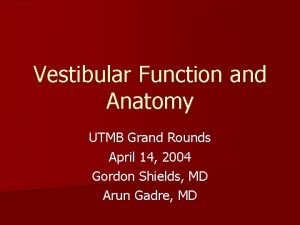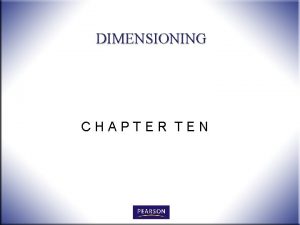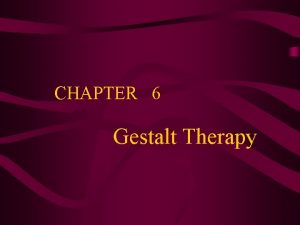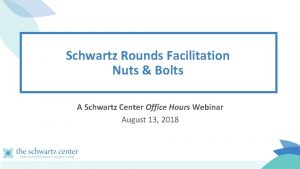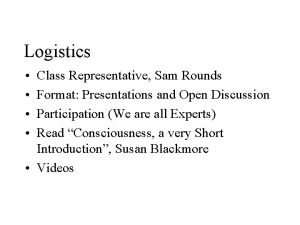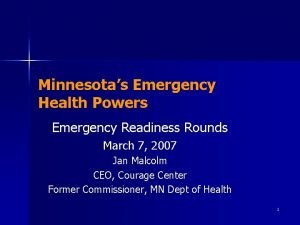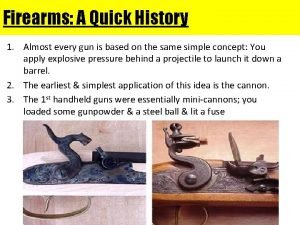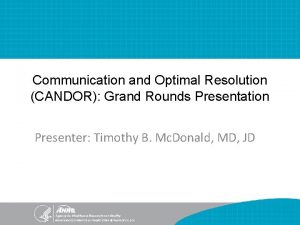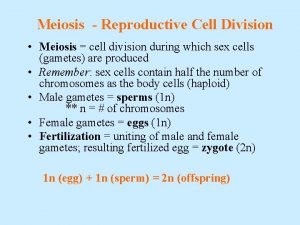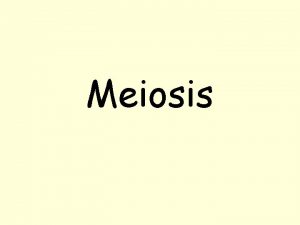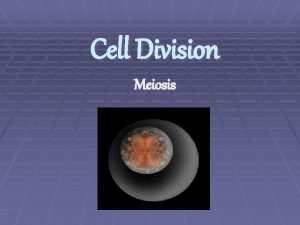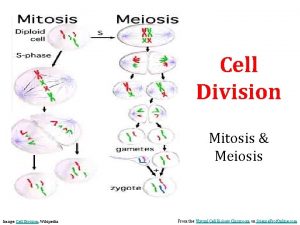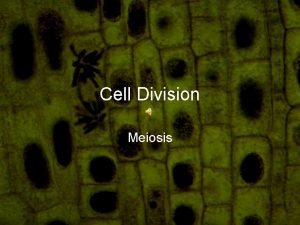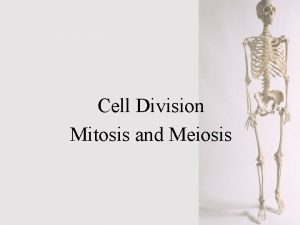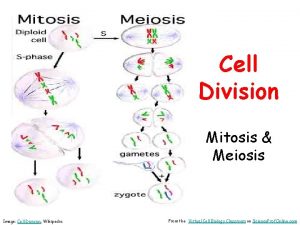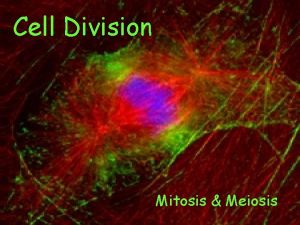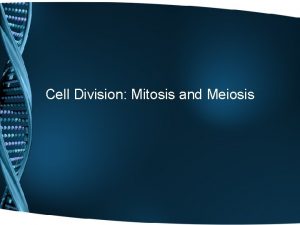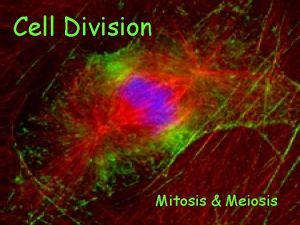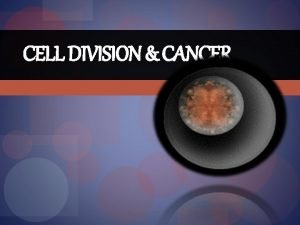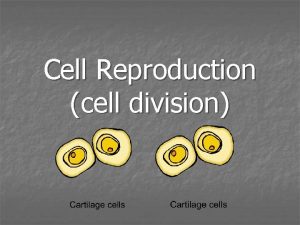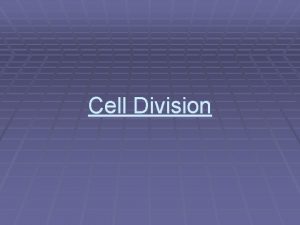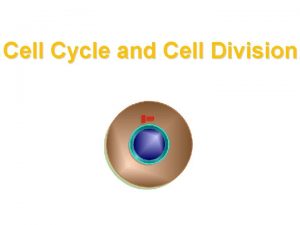Meiosis Meiosis Two rounds of cell division Meiosis
























- Slides: 24

Meiosis

Meiosis • Two rounds of cell division (Meiosis I and Meiosis II) • Results in 4 haploid cells • We need this to create gametes (sex cells) – Occurs in the testes in males (spermatogenesis) – Occurs in the ovaries in females (oogenesis)

Meiosis in Humans • Start with 46 double-stranded chromosomes (2 n) • After 1 division– 23 double or duplicate stranded chromosomes (n) • After 2 nd division— 23 single stranded chromosomes (n)

Why do we need Meiosis? • Fundamental basis of sexual reproduction • Two haploid (n) gametes are brought together through fertilization to form a diploid (2 n) zygote


Key Terms • Homologous chromosomes – Two separate chromosomes that have the same genes – One from your mother and one from your father • Sister chromatids – Each half of one chromosome • Homologous chromosomes are divided in meiosis I (reduction division) and sister chromatids will be divided in meiosis II.


Meiosis I: Reduction Division Spindle fibers Nucleus Early Prophase I (Chromosome number doubled) Nuclear envelope Late Prophase I Metaphase I Anaphase I Telophase I 8

Prophase I


Crossing Over


Metaphase I • Homologous chromosomes line up along the middle of the cell. • Each side has chromosomes from both parents.

Anaphase I • Homologous chromosomes separate and move to opposite ends of the cell. • Sister chromatids remain attached at their centromeres

Telophase I • Two nuclei are formed • Spindle disappears • Cytokinesis

Meiosis II • During Meiosis I, we divided homologous chromosomes (diploid haploid) • Meiosis I leads immediately into Meiosis II – There is no interphase, cell does not grow or duplicate DNA • In Meiosis II, we will divide sister chromatids. – Produces gametes with one copy of each chromosome and gene






Spermatogenesis • Occurs in the testes • Two divisions produce 4 spermatids, which mature into sperm • Men produce about 250, 000 sperm per day

Oogenesis • Occurs in the ovaries • Two divisions produce 3 polar bodies that die and 1 egg • Polar bodies die because of unequal division of cytoplasm • Immature egg called oocyte • Starting at puberty, one oocyte matures into an ovum (egg) every 28 days

 Mitosis and meiosis
Mitosis and meiosis Meiosis
Meiosis Cell cycle and cell division
Cell cycle and cell division Cell cycle and cell division
Cell cycle and cell division Steps of cell cycle
Steps of cell cycle Utmb grand rounds
Utmb grand rounds 75 nearest 10
75 nearest 10 Maths quiz rounds names
Maths quiz rounds names Rounds and fillets are usually dimensioned using
Rounds and fillets are usually dimensioned using 5 layers of neurosis
5 layers of neurosis A is an odd number which rounds to 100 000
A is an odd number which rounds to 100 000 Maintenance rounds
Maintenance rounds Schwartz rounds facilitator training
Schwartz rounds facilitator training Sam rounds
Sam rounds Quality teaching rounds coding sheet
Quality teaching rounds coding sheet Red, white & blue bite size rounds tortilla chips
Red, white & blue bite size rounds tortilla chips Readiness rounds
Readiness rounds Anatomy of a cartridge
Anatomy of a cartridge Harvard instructional rounds
Harvard instructional rounds Duke medicine grand rounds
Duke medicine grand rounds Nursing grand rounds presentation example
Nursing grand rounds presentation example Short division vs long division
Short division vs long division Aynthetic division
Aynthetic division H.c.f
H.c.f How to use long division
How to use long division





